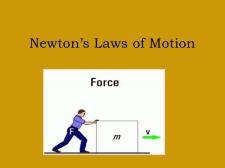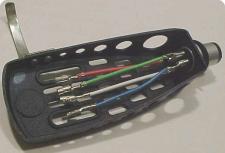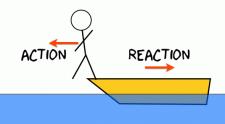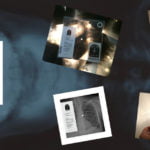It’s the time of year for saving money!
When you stop to think about it, all of recorded music is about motion — from the live performers, with their instruments or their voices moving air molecules that transfer some of their energy to moving the diaphragm(s) of one or more microphones, which turn that motion to a different kind of energy, which, (if we’re talking a phonograph recording) gets turned into the motion of a cutting stylus; which creates a groove which, when turned, causes the motion of a playback stylus which, being part of a phono cartridge, creates a voltage, which gets amplified to move the diaphragm(s) of one or more speakers, which move the air, to move our eardrums, to move the ossicles (the three teeny-tiny little bones in each of our ears), to jiggle the hairs in our cochleas, to stimulate the nerve-ends attached to each of them, to stimulate our brains to tap our toes or snap our fingers or whistle or sing along or dance wildly around the room YEAH! Motion!
 For purposes of this series, I’m declaring that motion comes in just two kinds: The kind we want, and work so hard to achieve, and the kind that should, wherever possible, to whatever degree possible, be blocked or avoided. Up through the first several installments of this series, what I mostly wrote about was that first kind of motion – the kind we want. Last time, though, in Part 7, I started to get into the issue of resonances which, though they can – especially those designed into a fine musical instrument – be very pleasing to the ear, have no place at all in a hi-fi system intended to reproduce all and only what was purposely made a part of the recording.
For purposes of this series, I’m declaring that motion comes in just two kinds: The kind we want, and work so hard to achieve, and the kind that should, wherever possible, to whatever degree possible, be blocked or avoided. Up through the first several installments of this series, what I mostly wrote about was that first kind of motion – the kind we want. Last time, though, in Part 7, I started to get into the issue of resonances which, though they can – especially those designed into a fine musical instrument – be very pleasing to the ear, have no place at all in a hi-fi system intended to reproduce all and only what was purposely made a part of the recording.
Although, in all but the very most extreme instances, it’s far too small and far too quick to be visible to the human eye, resonance is definitely a matter of movement. As I said before, whether by bending a piezoelectric element or by wiggling the generator parts of a magnetic cartridge in such a way as to break magnetic lines of force, the way a phono cartridge makes its output is always by movement. And when an unwanted resonance is added – as to the cantilever of a magnetic cartridge – extra movement is created at, and approaching, the fundamental and harmonic resonance frequencies of that cantilever (or even the entire stylus-cantilever-pivot-generator element assembly) and extra output is created that we hear as coloration or as distortion of the music signal.
 The principal source of resonances within the cartridge is the movement of the stylus in the groove. That can set off a whole string of resonances in the cantilever and the stylus, pivot, and generator parts attached to it, but the stylus being wiggled by the groove is not the only source of stimulus available to get things vibrating. The cartridge mechanism is mounted within a cartridge “body” which, like every other material object, has its own fundamental and harmonic resonant frequencies. (Please recall that I mentioned this last time, saying that, although the cartridge’s body has no direct role in generating its output, a number of cartridges use bodies made of exotic and/or costly materials for reasons that I can only imagine have to do with just those resonances and their actual or hoped-for salubrious sonic effects.) The whole cartridge assembly (the body plus all of its other parts) is mounted to the phono’s tonearm, either directly or by mounting it to a headshell which is, in turn, plugged-into or otherwise fitted to the tonearm. The tonearm is then mounted to (or in an appropriate position near) the turntable, which is mounted (suspended or otherwise) to a base; which somehow, whether on a table, a rack, or its own stand, eventually rests on the floor. And ALL of those things can serve, by vibrating either (as acoustic or mechanical feedback) in response to the music being played or in accordance with their own resonances, to shake the cartridge and provide external stimulus for resonant motion, unwanted extra output, distortion, and coloration.
The principal source of resonances within the cartridge is the movement of the stylus in the groove. That can set off a whole string of resonances in the cantilever and the stylus, pivot, and generator parts attached to it, but the stylus being wiggled by the groove is not the only source of stimulus available to get things vibrating. The cartridge mechanism is mounted within a cartridge “body” which, like every other material object, has its own fundamental and harmonic resonant frequencies. (Please recall that I mentioned this last time, saying that, although the cartridge’s body has no direct role in generating its output, a number of cartridges use bodies made of exotic and/or costly materials for reasons that I can only imagine have to do with just those resonances and their actual or hoped-for salubrious sonic effects.) The whole cartridge assembly (the body plus all of its other parts) is mounted to the phono’s tonearm, either directly or by mounting it to a headshell which is, in turn, plugged-into or otherwise fitted to the tonearm. The tonearm is then mounted to (or in an appropriate position near) the turntable, which is mounted (suspended or otherwise) to a base; which somehow, whether on a table, a rack, or its own stand, eventually rests on the floor. And ALL of those things can serve, by vibrating either (as acoustic or mechanical feedback) in response to the music being played or in accordance with their own resonances, to shake the cartridge and provide external stimulus for resonant motion, unwanted extra output, distortion, and coloration.
 One of the most important resonances to be considered in any phono setup is the combined resonance of the cartridge, the headshell (if any) and the moving mass of the tonearm. This will strongly affect both the low frequency sound of your record-playing system and its ability to deal with warped records. What this resonant frequency will be is determined not only by the individual resonances of the elements involved, but also by the compliance of the cartridge and how well it matches with the effective mass of the tonearm. Put most simply, a cartridge’s compliance is the elasticity factor that determines how easy it will be for the groove to wiggle its stylus. It’s that simple, but that’s not where it stops:
One of the most important resonances to be considered in any phono setup is the combined resonance of the cartridge, the headshell (if any) and the moving mass of the tonearm. This will strongly affect both the low frequency sound of your record-playing system and its ability to deal with warped records. What this resonant frequency will be is determined not only by the individual resonances of the elements involved, but also by the compliance of the cartridge and how well it matches with the effective mass of the tonearm. Put most simply, a cartridge’s compliance is the elasticity factor that determines how easy it will be for the groove to wiggle its stylus. It’s that simple, but that’s not where it stops:
The cantilever of the cartridge not only holds the stylus as it tracks the groove, but acts as a spring to support the tracking force of the tonearm. And, to get fancy, it even embodies Newton’s First Law of Motion (See, there’s that word again). In this case, the First Law (“Objects at rest tend to stay at rest and objects in motion tend to stay in motion”) comes into play as the spinning groove applies force to move the stylus, which being of low mass (less inertia) will move more than the (much higher mass and greater inertia) tonearm. As per the Third Law, (“Forces come in pairs and for every action, there’s an equal and opposite reaction”) the force on both the arm and the stylus is applied equally, but both don’t move the same amount, The thing that allows the stylus to move without perceivably moving the tonearm is the compliance – the elasticity, or “resistive springiness” – of the cantilever mount, which both allows it to move as required and provides enough resistance to prevent it from simply collapsing under load. The combination of springiness and load (the tracking force) puts the cantilever under tension and the tension, just as it does with the string of a musical instrument, contributes to the resonant frequency of the entire stylus-to-tonearm assembly.
 This can be at anything from about 7 Hz to about 12 Hz, but for a combination of the best (“cleanest”, “tightest”, “punchiest”) low frequency sound and the ability to “ride with” and not (really) have its stylus thrown out of the groove by warped records, the ideal cartridge/tonearm resonant frequency is generally regarded to be, depending on the specific system, somewhere between 8 and 10 Hz.
This can be at anything from about 7 Hz to about 12 Hz, but for a combination of the best (“cleanest”, “tightest”, “punchiest”) low frequency sound and the ability to “ride with” and not (really) have its stylus thrown out of the groove by warped records, the ideal cartridge/tonearm resonant frequency is generally regarded to be, depending on the specific system, somewhere between 8 and 10 Hz.
If you’ll keep the in mind the general rule that the lower the effective (moving) mass of the tonearm and headshell, the higher the compliance of the cartridge needs to be, and vice-versa, you’ll probably do just fine. Even so, if you want to make certain that you’ve got it right, there are a number of cartridge resonance calculators available on the internet and, for your convenience, I’ve added one that you can click on right here.
More on resonance, tracking, and other good stuff next time; I hope to see you then.








